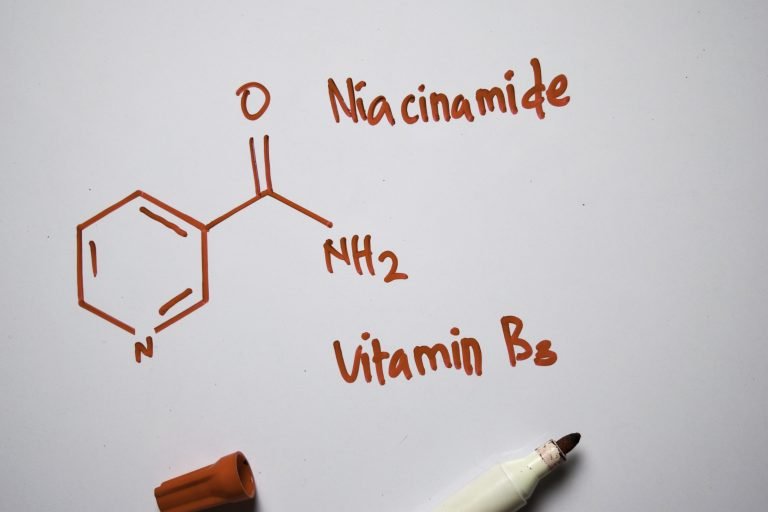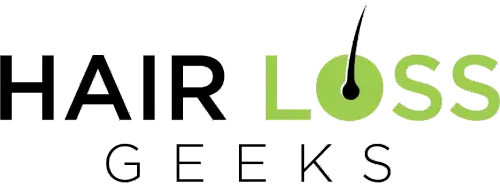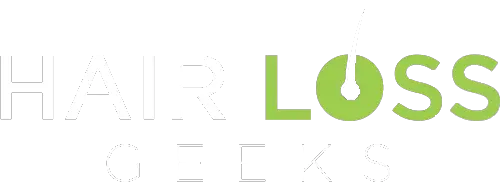
Page Contents
Niacinamide is a very long word, and one that you might not have heard about. However, you probably do actually know what niacinamide is, or at least a little about it. You probably also already know that it is good for your hair.
But you may not know how niacinamide can benefit other parts of your body too, or how to use it for your hair. So, let’s take a look at why niacinamide might seem familiar and how you can use it for yourself.
About Niacinamide
Niacinamide is probably something you know of as Vitamin B3. Also sometimes called nicotinamide, this vitamin is one that everyone knows that they need. That is why so many vitamins have a B-complex that has all of the B vitamins in it, including Vitamin B3.
Now, you may hear some people replace the word niacinamide with niacin, but these are not the same thing. There are two slightly different types of Vitamin B3, of which niacinamide and niacin are the two of ones. In this way, these two things are quite similar, but they are still not the same.
Your body actually makes niacinamide from niacin. However, it only usually does this when there is an excessive amount of niacin in the body. Your body also takes something called tryptophan and converts it into niacinamide.
Both niacinamide and niacin are also different in both chemical structure and how they affect your health. As Vitamin B3, however, they play a vital role in converting food into usable energy and helping your body’s cells carry out their chemical reactions.
Another thing about niacinamide that you should know is that it is water-soluble. This means that Vitamin B3 is one of the vitamins that your body can’t store. This is why niacinamide is important to intake on a daily basis to make sure that you get enough Vitamin B3.
This vitamin is one of those that are widely considered to be vital to have because of all it does for you. Some of the biggest functions of this vitamin have to do with your skin. Mostly this Vitamin B3 helps build proteins in the skin, specifically locking in moisture to prevent everyday damage. This vitamin also regulates the oil your body makes, both for your skin and for your scalp.
Benefits of Niacinamide
There are clearly benefits of this vitamin. As mentioned, niacinamide goes into building some of the proteins your body needs. Though most of these are for your skin, your hair needs some of these proteins as well.
Specifically, niacinamide is one thing that goes into making keratin. Keratin is a huge part of both your hair as well as your skin, so this alone can help hair. The fact that this vitamin also seals in moisture, is yet another benefit for your hair. The ability to help regulate the oil your body makes is a big thing for your hair too.
Niacinamide is also used sometimes to help with inflammation – yet another big help for hair. But this combined is why niacinamide is sometimes used to help treat certain skin conditions. Some of these are eczema or simply redness and blotchiness on your skin.
Niacinamide also protects against damage because it makes the proteins in your body strong. This damage might be caused by the sun, pollution, toxins, and even oxidative stress. This keeps both your hair and skin healthy and shiny.
It also makes for less repairing that your body has to expend itself on, allowing you to have even less stress on your body. This can let your body repair some of the damage that might have already been done, include damage that might have been done by aging.
Age spots on your skin, for example, are sometimes treated with niacinamide. The same is true of hyperpigmentation, dark spots, rosacea, and other collagen problems. People are even looking into seeing if this vitamin might help prevent melanoma.
There is also research going into finding out if niacinamide might really be a preventative for diabetes and kidney disease. And these are just the more commonly known niacinamide benefits.
Cautions of Niacinamide
There are two cautions of niacinamide that you have to be careful about. On the one hand, too little of this vitamin can cause problems, but so can too much of it. When it comes to too little, there are a few signs of niacinamide deficiency that you can keep an eye out for if you think you are low on it.
There is one disease, in particular, that is called pellagra that is directly caused by a lack of Vitamin B3. Pellagra is characterized by the four D’s: diarrhea, dermatitis, dementia, and then death, if left untreated. Though pellagra is rare in developed countries, third-world countries can still struggle with it.
Since Vitamin B3 is a large part of skin, kidney, and brain functions, disorders in these areas are obvious signs as well. But these are the main signs of a Vitamin B3 deficiency.
On the flipside, too much niacinamide can have nasty consequences of its own as well. Some people are allergic to niacinamide in concentrated amounts or applying too directly. Most who react to this vitamin have some other allergy, and the niacinamide can then cause your body to release histamine.
This is why patch tests on skin are recommended when niacinamide is used topically. Also, this is also probably why concentrated amounts of niacinamide, if it is too much for your body to handle, can cause your hair to fall out instead of grow stronger.
Since excess niacinamide is excreted with your urine, this can put a strain on your kidneys and liver as well. Other, milder effects are flushing, redness, itching, stomach discomfort, nausea, headaches, and tingling of your skin. For those reasons, your doctor may caution you against taking large amounts of any sort of Vitamin B3 supplements.
Related Reading
How To Use Niacinamide For Your Hair
As with most vitamins, niacinamide is best for you if you can get it naturally in your diet. If you can’t get enough Vitamin B3, for whatever reason, then there are plenty of supplements that you can take. Only take niacinamide supplements if it is safe for you to do so, though.
So, when it comes to foods, this vitamin is found in eggs, meats, nuts, seeds, green veggies, beans, and milk. Because of its importance, niacinamide is often added to cereals and other foods as well to fortify them.
Niacinamide is easy to find in supplements, in case you can’t get enough the natural way. It is included in B-complex supplements, but you can also get niacinamide by itself if you prefer. Just be sure when it says Vitamin B3 that you are getting niacinamide and not niacin.
However, since niacinamide is so popular for your skin, you can find it in all kinds of other forms. There are niacinamide serums, creams, moisturizers, and a few other things that are all meant to be used topically. Just be sure that it is niacinamide and not niacin, which is not as easily absorbed that way.
Most cosmetic products featuring niacinamide in them have a certain concentration. Most are 5% or less, and this is usually all that is needed. However, sensitive skins and scalps may need to start with a 2% formula. Hyaluronic acid is supposedly a good secondary ingredient, as it helps increase this vitamin’s absorption.
Though these products are made to be used on your skin, some of them can be used on your hair as well. Applying niacinamide topically to your hair can make sure that it gets absorbed where you want it to be. So, feel free to try products with niacinamide directly onto your hair.
Final Thoughts
Niacinamide is clearly a vitamin that your hair needs in order to be healthy and thick. As with most vitamins, hair growth results will not happen with it overnight, but it can still help. If you take it for a couple of months without seeing results, then it probably isn’t working for you.
Though there is plenty of evidence niacinamide can help your hair, most of the tests that have been done on it pair it with other things. So, it is slightly difficult to know how effective it truly is by itself. Still, Vitamin B3 can definitely help your hair, and every little bit of help is a good thing.






